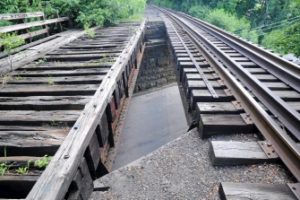Many commuter and freight railroads continue to be slow to adopt safety technology that could prevent deadly crashes and derailments. This is in spite of the fact that that Congress has mandated that railroads install positive train control or PTC.
PTC uses digital radio signals, GPS and signals on tracks to monitor the position of trains. It has the ability to automatically stop or slow a train to prevent it from disobeying a signal. This has the potential to prevent derailments and serious accidents, including trains entering tracks that are closed for maintenance.
According to the Federal Railroad Administration, some railroads have made some progress, but many others have yet to equip a single train or track with the technology.
Congress passed the law in 2008 which gave railroads seven years to install PTC. Last year that deadline was extended for three more years. But according to Sarah Feinberg, head of the FRA,, railroads should not delay in installing the technology. Every day that goes by without PTC, she said, we are risking another serious train accident.
As of summer 2016, PTC is installed on 9% of freight route lines and 22% of passenger rail lines. Freight railroads have also outfitted 34% of their locomotives with PTC.
However, progress varies greatly by railroad. BNSF has equipped 3/4 of its locomotives, while Union Pacific has barely equipped any of its locomotives at this point.
Our View
Our railroad accident attorneys in Virginia hope that more railroads will get PTC implemented as soon as they can. It seems wrong that the technology exists right now to greatly reduce the chances of train collisions and derailments – thereby saving many lives – yet many railroads are dragging their feet to install PTC.
They may think they are saving money by not installing PTC, but as this $60 million verdict shows, a train derailment can be extremely costly for a railroad, both in dollar terms and in terms of its professional reputation.
